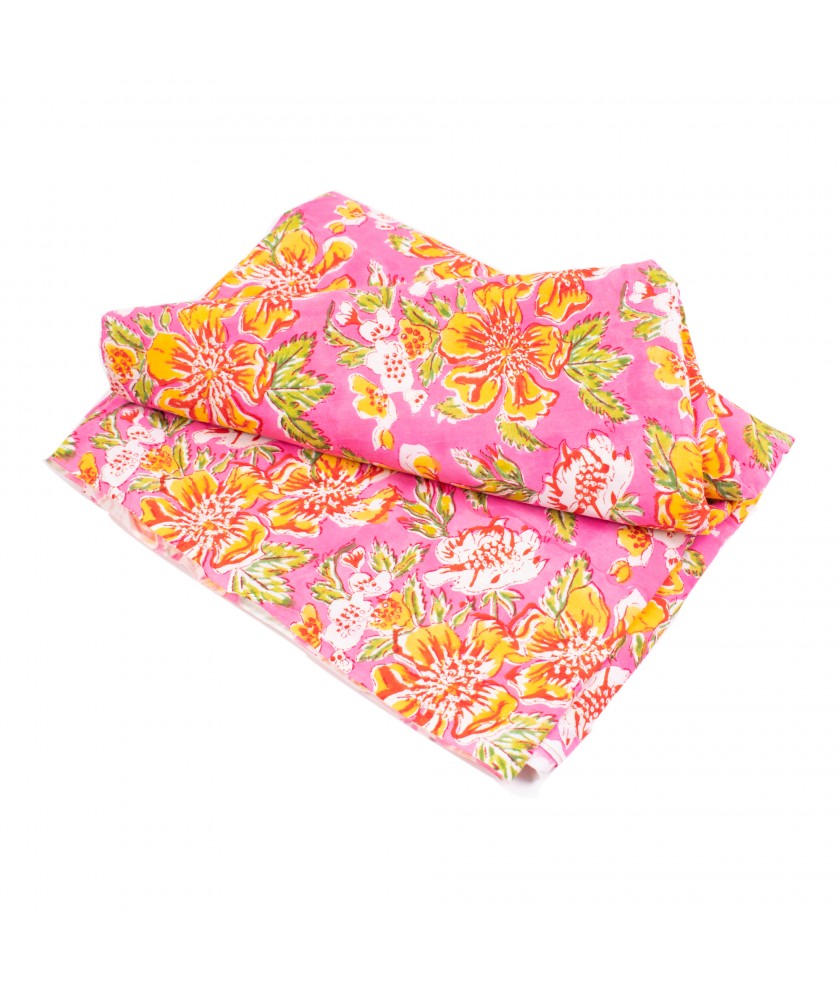General FAQs
Q: What is Indian cotton fabric?
A: Indian cotton fabric is a diverse range of textiles made from cotton fibers, renowned for their vibrant colors, intricate designs, and luxurious texture. It has a long and rich history, dating back to the Indus Valley Civilization, and has played a significant role in Indian culture and fashion.
Q: What are the characteristics of Indian cotton fabric?
A: Indian cotton fabric is known for its:
-
Vibrant colors: Traditional dyeing techniques and natural dyes produce a wide spectrum of rich and vibrant hues.
-
Intricate designs: Hand-printing, block printing, and tie-dye techniques create intricate patterns and motifs inspired by Indian art and culture.
-
Luxurious texture: The soft, breathable nature of cotton, combined with skilled craftsmanship, results in a luxurious and comfortable fabric.
-
Versatility: Indian cotton fabric is used in a wide range of garments, from traditional attire like saris and kurtas to modern fashion pieces.
-
Sustainability: Traditional production methods often involve natural dyes and eco-friendly techniques, making it a more sustainable choice compared to synthetic fabrics.
Q: Why is Indian cotton fabric so popular?
A: Indian cotton fabric is popular for several reasons:
-
Rich cultural heritage: It represents a long and rich tradition of craftsmanship and artistry, deeply rooted in Indian culture.
-
Unique designs and colors: Its vibrant colors and intricate designs are distinct and visually appealing, making it a popular choice for fashion designers.
-
Comfortable and versatile: The soft, breathable nature of cotton makes it comfortable to wear in various climates, and its versatility allows for a wide range of applications.
-
Sustainability: Consumers are increasingly seeking sustainable options, and Indian cotton fabric often aligns with eco-friendly practices.
-
Global appeal: Its unique beauty and cultural significance have made it popular worldwide, transcending geographical boundaries.
Q: How is Indian cotton fabric made?
A: The production of Indian cotton fabric involves several steps:
-
Cotton cultivation: Cotton is grown in various regions of India, often using sustainable agricultural practices.
-
Cotton fiber processing: Harvested cotton is cleaned, ginned (seeds are removed), and carded to prepare the fibers for spinning.
-
Spinning: Cotton fibers are spun into yarn, either by hand or using modern spinning machines.
-
Weaving: Yarn is woven into fabric on traditional looms or modern power looms, creating the base fabric.
-
Dyeing and printing: Fabric is dyed using natural or synthetic dyes, and intricate designs are applied using hand-printing, block printing, or tie-dye techniques.
-
Finishing: The fabric undergoes finishing processes to enhance its texture, colorfastness, and durability.
FAQs about Types of Indian Cotton Fabric
Q: What are the different types of Indian cotton fabric?
A: There are numerous types of Indian cotton fabric, each with its unique characteristics:
-
Kalamkari: Hand-painted cotton fabric with intricate motifs and vibrant colors.
-
Bandhani: Tie-dye technique creating intricate circular patterns and vibrant colors.
-
Leheriya: Wavy tie-dye technique producing flowing patterns and subtle color variations.
-
Bagh: Printed cotton fabric with intricate floral designs and vibrant colors.
-
Chintz: Glazed printed cotton fabric with delicate motifs and a smooth finish.
-
Madras: Lightweight cotton fabric with a checkered pattern, often used for casual wear.
-
Khaddar: Handwoven cotton fabric known for its durability and comfortable texture.
-
Dhoti: Unstitched rectangular piece of cotton fabric worn by men as traditional attire.
-
Sari: Long piece of cotton fabric draped around the body by women, an iconic symbol of Indian fashion.
FAQs about Caring for Indian Cotton Fabric
Q: How should I care for my Indian cotton fabric?
A: Proper care extends the life of your Indian cotton fabric:
-
Hand wash or gentle cycle: Avoid harsh detergents and machine washing that can damage the delicate fibers and colors.
-
Mild detergent: Use mild detergent specifically designed for delicate fabrics.
-
Air dry: Avoid tumble drying, as high heat can shrink or damage the fabric. Hang the fabric to air dry naturally.
-
Store properly: Fold the fabric neatly and store it in a cool, dry place away from direct sunlight to prevent fading.




